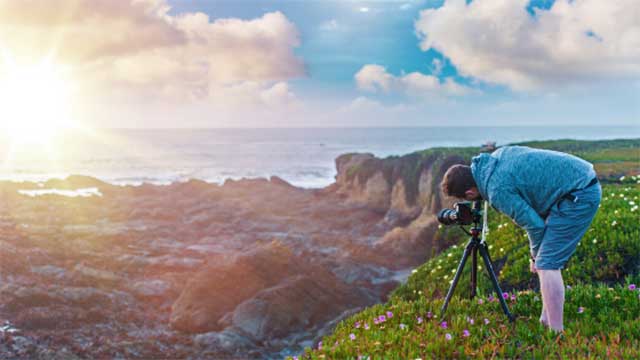
A photography shot list is as it says, a list of all the shots needed for a particular photography project.
If you are on assignment you may have a brief from the client on exactly what is expected, but other times it is left to the creation and imagination of the photographer.
1. Research locations
Before you even step foot out of the door, look up the destination you are going to. Have a list of locations you want to shoot, and use the tools available to view the place.
Google Maps allows 360 views, street views, and satellite views (you can start doing this of places you’d like to photograph right now, even during lockdown).
This will allow you to pinpoint places you want to visit based on their geography. Find out what festivals and events are occurring while you are there to add to your stock of photos.
2. See what’s available
Your research can go one step further in looking at what other photographs are available online.
This can inspire you to look for similar shots. It can show you a scenic area that may be perfect for what you are looking for.
It can give you an idea of angles. Look at photos taken at a variety of times of day to determine whether sunrise, sunset, bright noonday sunshine, or even night will enhance the photos you are after.
3. Categorize the list
No doubt your shot list will be extensive, but by categorizing what you want, you will be able to sort through it easier. For my stock photos, I use a similar way to organize photographs that I’ve taken.
I have sunsets, sunrises, pets, and food as well as other less common categories.
You may need more specific ones such as close-ups, candid shots, group shots, landscapes, or places depending on what you’re shooting and why. Having a clear idea of what you want from each category makes it much easier to set up a list of shots.
4. Online templates
If setting up your own list from scratch seems too daunting and you are not sure how to start, no worries. Simply Google “Online Photo Shot List Template.” I was surprised to see how many sites cater to this rather specific need. There is a multitude of different templates on offer, most of them free of charge. Simply find one you like, and you have a good starting point to make it your own.
5. Finally, be flexible
One thing with outdoor photography is that we are all at the mercy of the weather.
Sometimes, all the planning in the world cannot account for weather changes, so you must be flexible in what you want to shoot. Also, what you see online as part of your research may not be up to date.
So when you get there, you find the view is obscured by trees or buildings and no longer looks appealing.
Then there are the surprising finds that you simply must photograph that were not on your list. Flexibility is key, so be ready to adapt your plans when you’re shooting.
Bear in mind, that a shot list is about planning, making effective use of your time, and successfully getting the shots you want. It’s a very useful tool to keep organized and approach your photography in a professional manner.

